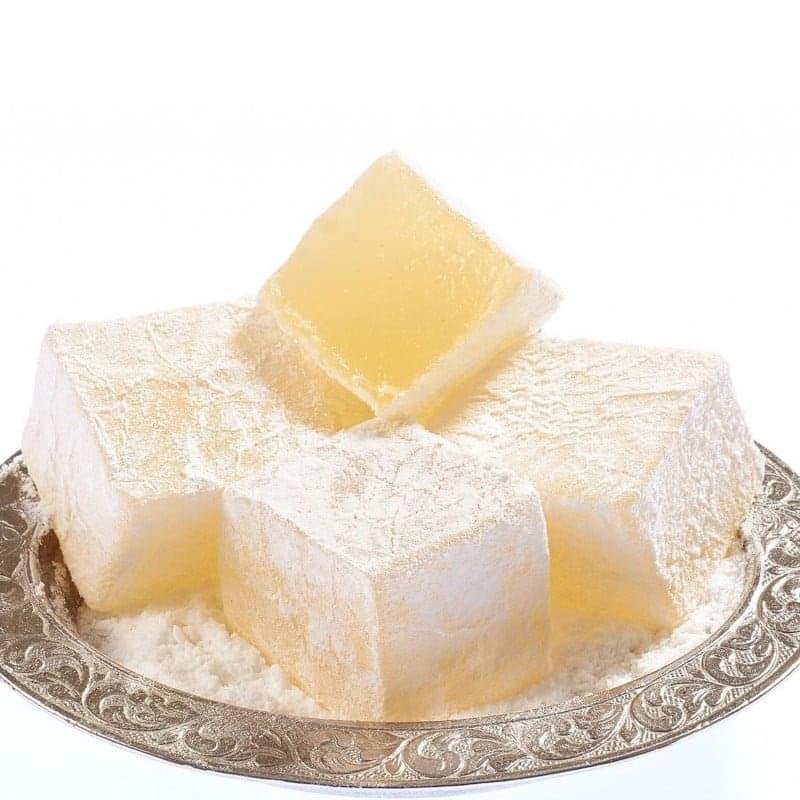The Timeless Allure of Turkish Delight: A Cultural Treasure
Turkish delight, known as lokum in Turkey, is more than just a confection; it is a symbol of hospitality and tradition that has transcended generations. This beloved sweet has a rich history and cultural significance that captivates both locals and visitors alike.
A Sweet Legacy: The Origins of Lokum
The origins of Turkish delight can be traced back to the Ottoman Empire, where it was initially crafted in the 15th century. This delicacy quickly became a staple at royal feasts and gatherings, showcasing the grandeur of Ottoman culinary arts. Today, lokum remains a cherished treat that represents Turkey’s rich cultural heritage, enjoyed by people around the world.
The Perfect Harmony of Flavor and Texture
Turkish delight is characterized by its chewy, gelatinous texture, often dusted with powdered sugar or cornstarch to prevent sticking. Made from simple ingredients like sugar, starch, and water, this sweet treat may seem unassuming, but its subtle sweetness and satisfying chewiness offer a delightful experience. The absence of added flavors allows the pure taste of the confection to shine, making it a versatile companion for tea or coffee.
A Symbol of Hospitality and Friendship
In Turkish culture, lokum is more than just a dessert; it embodies the spirit of hospitality. It is customary to offer this sweet treat to guests as a gesture of welcome and goodwill. Sharing lokum during special occasions, such as weddings, holidays, and family gatherings, strengthens bonds and fosters a sense of community. This practice reflects the deep-rooted tradition of hospitality that is central to Turkish culture.
The Art of Crafting Lokum: A Culinary Tradition
The preparation of Turkish delight is an art that has been perfected over centuries. Traditional methods involve boiling a mixture of sugar, water, and starch until it reaches the right consistency, then allowing it to cool and set. The meticulous process requires skill and precision to achieve the perfect texture and flavor. Each piece is cut into cubes and generously coated with powdered sugar, ready to be enjoyed.
Lokum in Modern Culture: A Sweet Evolution
While Turkish delight has deep historical roots, it has also evolved to accommodate modern tastes. Today, you can find various flavors and variations, from rose and lemon to pistachio and walnut. Despite these innovations, the classic version remains a beloved favorite, symbolizing the essence of Turkish confectionery.
A Journey into the Heart of Turkish Cuisine
Savoring Turkish delight is akin to embarking on a journey through Turkey’s culinary landscape. Whether enjoyed as a sweet treat after a meal or shared with friends over coffee, lokum invites you to experience the warmth and generosity of Turkish culture. Each bite is a reminder of the rich traditions that have shaped this delightful confection.
Indulge in the timeless allure of Turkish delight and discover why this cherished sweet continues to capture the hearts of people around the world. It is not just a dessert; it is a taste of history, culture, and hospitality that embodies the spirit of Turkey.
Discover Traditional Turkish Recipes Discover Traditional Recipes from Europe You may like this also: Austrian Sachertorte
Turkish Delight
Ingredients
For Sherbet
For Turkish Delight
For Dredging
Instructions
-
First, prepare the sherbet. Put sugar and water in a pot. Squeeze the juice of a thick slice of lemon on it and throw the lemon into the water. stir until the sugar dissolves.
-
After the syrup starts to boil, reduce the heat and boil for another 15 minutes. After 15 minutes, remove the sherbet from the stove. Remove the lemon slice inside. Set the sherbet aside and let it cool.
-
Add 3 cups of cold water to a separate pot. Add starch and cream of tartar and mix well and put on the stove. Continue stirring until it boils.
-
After the consistency thickens, add the sherbet you have prepared slowly, stirring constantly.
-
After adding all the syrup, continue cooking over low-medium heat, stirring frequently.
To prevent the pot from sticking to the floor, do not leave it unattended at this stage. -
When the Turkish delight starts to thicken, release the wire whisk. Take a spoon and continue mixing without stopping. There will be a total cooking time of 40 minutes.
-
At the end of the time, your Turkish delight, which will become quite sticky, will have the desired consistency.
-
Take a glass or aluminum baking tray and grease it all over with a few drops of oil. Pour the Turkish delight onto the tray and smooth the top using a spoon or spatula.
-
When the Turkish delight in the tray reaches room temperature, cover it with stretch film and put it in the refrigerator and let it sit overnight.
-
The next day, mix starch and powdered sugar in a plate to cover the Turkish delight. Uncover the Turkish delight on the tray and sprinkle the starch mixture on it. Separate the edges from the tray with a knife and remove the Turkish delight completely from the tray.
-
Apply the starch mixture to the part of the Turkish delight that remains under the tray. Cut the whole Turkish delight first into strips and then into cubes with scissors or a sharp knife. Pour all the remaining starch mixture over the Turkish delights and mix gently to ensure that all the pieces you cut are coated in the starch mixture.
-
Your plain Turkish delight is ready. You can serve it on a serving plate of your choice. Bon Appetit!












